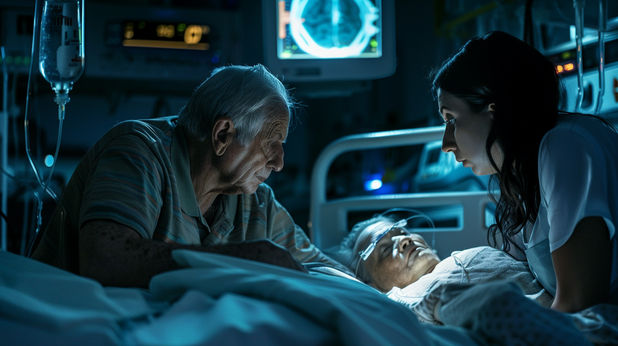Any time a witness is going to give testimony in a Texas deposition or courtroom, he or she has to take an oath to tell the truth, the whole truth, and nothing but the truth.
This oath originates from the biblical commandment to not bear false witness. Although lying is certainly one type of bearing false witness, the concept goes further.
Have you ever encountered someone who’s told part of the truth, but left out material facts? That’s bearing false witness—and that’s what the testimonial oath wants to prevent.
From time to time, in preparing a medical malpractice plaintiff for deposition, we have to deal with how to handle suspicious, fabricated, or patently false evidence introduced by a defendant. That’s what I’m encountering today, as I present my client for deposition and then take an optometrist defendant’s deposition right after it.
Medical records: Optometrist ignores signs of retinal detachment
The facts of the case are straightforward. The patient went to an vision center because she was experiencing a dark spot in her vision on the inside (nasal side) of her left eye. The regular optometrist was out of town and a fill-in optometrist who didn’t normally work at the vision center was covering.
According to the medical records from the vision center, the fill-in optometrist didn’t dilate the patient’s eye or perform a fundal examination of the back of the patient’s eye. Instead, he diagnosed her with an inflamed eyelid and asked her to use warm compresses four times a day.
We retained an ophthalmology expert to review the medical records. He concluded that the optometrist was negligent by not performing dilation and a fundal exam, because it’s a classic sign of a dangerous medical problem with the retina called retinal detachment. The retina is a layer of cells in the back of the eye that trigger vision in the brain. Without emergency treatment, retinal detachment could cause blindness.
A suspicious allegation of patient noncompliance
As a lawyer who represents plaintiffs in medical malpractice cases, it’s my habit to send a request for production to the defendant early in litigation that requests “Copies of any personal notes or information recorded or written about the patient or the patient’s family that are not contained in the medical records.”
As is my habit, I sent this request for production to the defendant optometrist in this case. Lo and behold, last night—the night before his deposition—the optometrist produced a fuzzy photo of a single typed page that said: “One female patient…experienced seeing a spot and flashes on her [left eye] at last visit…comes back today…because a spot and flashes are still there. Patient refuses to have [a dilated fundal exam] and photos at this visit because she said she had [them] done at the last visit.”
The note isn’t part of the medical record, but also says that the defendant had difficulty using the electronic medical record (EMR) at the vision center.
One of the favorite defenses of health care defendants is that the patient didn’t follow instructions of a doctor or health care provider. This is called patient noncompliance. When this truly occurs, doctors and providers almost always document it in the patient’s medical record. That way if any complication occurs, the doctor or provider can point to the documentation and say, “it’s not my fault.”
In this case, the defendant wants to blame the patient but has a problem in that there’s no documentation to support the testimony that he no doubt plans to give. Then, voila, the defendant produced this page of vague notes that aren’t part of the medical record.
Handling suspicious notes and testimony
Ultimately, it’s up to the jury to determine the weight and credibility to give to the testimony of witnesses. That’s why I recommend that plaintiffs tread carefully when answering questions about suspicious or even downright false testimony or evidence from a doctor or health care provider.
Some attorneys use the technique of asking a witness something like, “Are you saying that Dr. X is lying?” That’s a trap.
It’s up to the jury to determine the credibility of a witness. The best way for a plaintiff to answer such a question is to say something like, “All I can say is that information is incorrect.” If pressed, a plaintiff could add, “I can’t speak to the motivation or reasons that Dr. X said that information, but I can testify that it’s not accurate.”
From an attorney perspective, there are additional tools to investigate suspicious evidence. At deposition, careful, methodical questions are useful to probe into the creation and timing of documents.
For computer-generated documents, discovery for document metadata can shed light on when the document was created and edited. The absence of metadata can be important, too, as the jury considers what weight to give to the evidence.
For questionable documentation in an electronic medical record (EMR), audit trail discovery can lead to a wealth of information. Federal standards require EMR systems to generate an audit trail showing the date and time of each documentation or access to information in a patient’s chart.
If you’ve been seriously injured by poor optometry or other health or medical care in Texas, then contact a top-rated, experienced Texas medical malpractice lawyer for a free consultation about your potential case.





